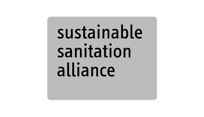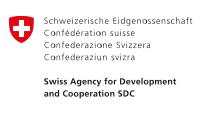Plastic upcycling is the creative transformation of plastic waste into new items U.3. Products from upcycled waste are functional and serve a purpose but also have artistic value and make a statement. While upcycling can be an important auxiliary to sensitise communities about waste issues, it is of limited relevance to SWM.

Upcycling creatively reuses waste materials to produce new items with a unique appeal, artistic touch and statement. The original state, shape or design of the plastics are usually conserved and intentionally displayed; production by specific community members can further add a story. Examples include backpacks from sewed-up packaging waste or toys from food containers. Upcycling can sensitise affected communities about waste issues, provide livelihood opportunities and foster positive, fulfilling and creative activities. Based on the product’s perceived value and statement, customers may be willing to pay higher prices; a sale in high-value markets such as charity shops for tourists is ideal. Due to the small production capacities and limited market potential, upcycling is of limited relevance to SWM, particularly in humanitarian contexts, and does not significantly reduce waste amounts. Nor is upcycling a circular economy approach - the need for disposal of upcycled goods is simply delayed.
Design Considerations
A variety of processing techniques and products for the upcycling of plastic waste are available; the only limitation may be the creativity of designers. Ideally, materials for upcycling are collected at source before they enter waste streams. This helps ensure that they are clean, uncontaminated or soiled by other waste and that further processing is simplified. Preferably, materials are collected from point sources (such as shops, restaurants and returned waste at in-kind distributions) enabling a more efficient collection of larger quantities of adequate quality.
Materials
Existing equipment, such as sewing machines or heat transfer presses for textiles, can be repurposed for the upcycling of plastic waste. Various plastic materials can be used for upcycling, including recyclable, non-recyclable and composite plastic. Upcycling can use all sorts of waste materials and plastics can be combined with other materials such as wood or metal.
Applicability
Plastic upcycling is more appropriate in stable recovery, protracted or development settings. As upcycling does not significantly reduce SWM efforts, implementation during or shortly after emergencies is inadvisable. The primary reason for upcycling is not to enhance SWM but to facilitate livelihood opportunities, establish creative workshops in safe spaces or provide a day structure and distraction for some community members. Such interventions might particularly support women and highly vulnerable people who cannot access other interventions. If there is an existing recycling sector, most recyclable plastics should be handed to them U.1.
Operation and Maintenance
Most local communities and humanitarian and development actors lack expertise in the upcycling of plastic waste. Engaging with specialist organisations or private sector entities is therefore advisable. Upcycling equipment may require electricity, which can limit workshop locations. The limited size and operation of the electrical equipment could, however, enable energy needs to be covered by stand-alone solutions such as photovoltaic systems. Community members engaged in the processing need to be adequately trained, including in occupational health and safety X.4 so that the equipment is used safely.
Health and Safety
When upcycling waste materials, consideration must be given to occupational health and safety X.4 and the protection of the environment and public health. If plastics are thermally treated (for example stiffening food packaging with heat transfer presses) materials must not be overheated as toxic fumes may be produced. As plastic upcycling does not use all the waste material, scrap pieces require adequate disposal. End products from upcycling must be safe to use. Workers receiving and cleaning waste products must wear adequate personal protective equipment.
Costs
Upcycling can be low-tech and low budget. Depending on the type of plastic upcycling and the intended end products, investment costs are mainly for a processing workshop and equipment. Operational costs can be low; they may only include staff and energy costs as most of the raw materials are free waste. Financial sustainability for plastic upcycling is challenging in most settings, as the quantities produced and the sale value on local markets are usually low. It is always advisable to identify potent niche markets, such as supplying charity shops in larger cities, to generate higher revenue.
Social Considerations
Upcycling facilities can be creative, safe and inclusive spaces for targeted communities X.9. Upcycling can also sensitise communities about waste issues and safe waste management X.6. It is essential that upcycling by humanitarian actors does not compete with regular market products and distort local markets X.5.
Key Decision Criteria
Input Products
Plastics
Output Products
Products from Processed Plastic
Response Phase
Application Level
Management Level
Space Required
medium
Technical Complexity
medium
Objectives & Key Features
Small and non-industrial scale processing of recovered plastic into higher value products, Waste diversion from disposal
Strength & Weakness
- Can offer creative and inclusive activities in safe spaces
- Can create livelihood opportunities
- Upcycling products can sensitise communities about waste issues
- It has limited impact on reducing waste amounts
- There is usually a limited market for upcycling products






